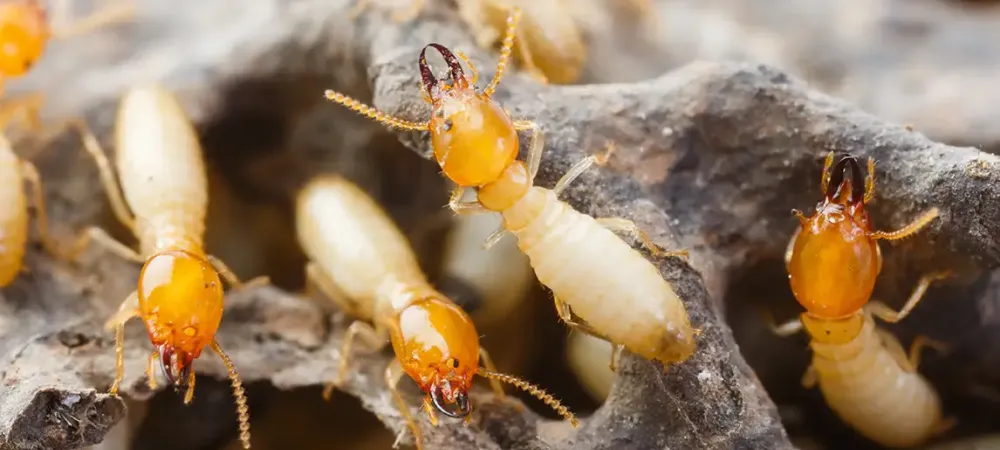| Carpenter Ants | Termites | |
|---|---|---|
| Body Shape | Hourglass shape with a narrow waist | Straight body with no distinct waist |
| Wings | Front wings larger than hind wings held flat over the body | Both pairs of wings are roughly the same size |
| Antennae | Elbowed antennae | Straight antennae |
| Color | Black | Light colored, usually white or pale yellow |
| Habitat | Nest in wood | Nest in wood or soil |
| Diet | Feed on nectar and other insects | Feed on wood and plant material |
| Damage | Can cause damage to structures but not as quickly as termites | Can cause extensive damage to structures and homes |
Are you worried about flying insects around your home or office? We get it! Misidentifying a winged termite as a flying ant could cost you thousands of dollars in property damage.
Although termites and flying ants are two very different species of insects, it can be relatively difficult to distinguish one from the other. Generally, termites have a wider body, longer wings, and a white or cream-colored body.
Flying ants, on the other hand, have a narrower waist and are darker in color. While termite wings are the same size, flying ants’ wings can be different sizes.
Don't stress; Ransford Pest Control is here to help you proactively identify winged termites and flying ants so you can get rid of these pests before they become a bigger problem!
When is Swarming Season in Massachusetts?
Most of the year in Massachusetts you'd never know carpenter ants or termites even exist! This is because carpenter ants are primarily nocturnal, and the only species of termites present in Massachusetts live underground. It's really an out-of-sight-out-of-mind situation until spring. Springtime in Massachusetts means more than just increased flowers and warmer weather - it is also the beginning of the subterranean termite and ant-swarming season. The season typically begins in April and can last until June, when these pests emerge from their nests and swarm, looking for new nesting sites.
What About Non-winged Termites and Ants?
Although spring's ant and termite swarming season is the most common time of year Ransford hears complaints of termites, residents should also be aware that non-winged termites are active year-round.
Dealing with active termite infestations requires experienced pest control professionals with advanced tools and techniques, especially if using the least toxic approach possible is important to your family, so don't go at it alone!
Furthermore, ensuring a timely extermination can save you thousands in structural damage repair costs later on when significant damage has occurred due to such infestations going unnoticed over time.

